Adding actions using the Canvas Editor
The bottom of the right hand pane of New Trigger window
provides the canvas or drawing area of the Canvas
Editor.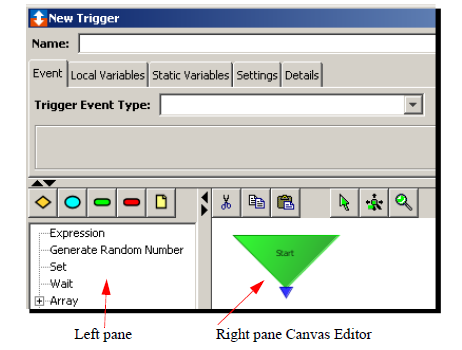
The left hand pane provides an expandable list of
actions that you can drag to the canvas area.
The same set of actions are available when using the List
Editor.
Adding parameters to the action
Using the Canvas Editor, you can add actions to a trigger and then specify parameter values as follows:
- From the Canvas Editor left hand pane, expand a
category (if necessary), and then select the action you
want to place on the right hand pane canvas.
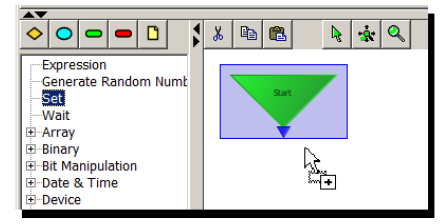
- Position the mouse cursor where you want the action
block to appear, and then select with the left mouse
button.
For this example, the Set action statement appears.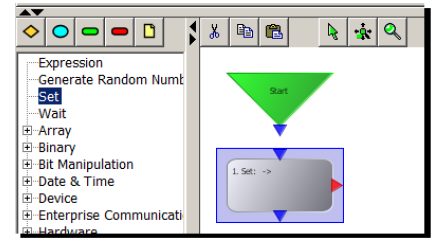
- Double-click the action.
A window for the action appears.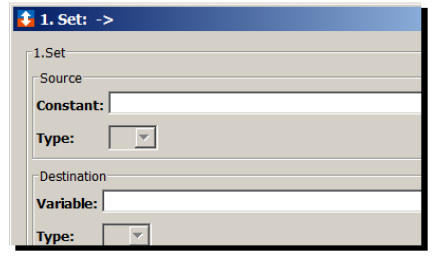
Note that this is the same window that appears whenever you add an action using the List Editor. - Specify each parameter value as appropriate, and
then select close (X).
The values appear on the action statement.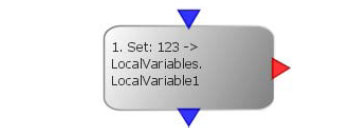
- To add more actions to the trigger, return to step
1.
Connecting actions
In the Canvas Editor, you draw the routes by connecting the output of one action to the input of another action. This operation makes it easy to visualize the logic flow in the trigger.
For this example, the operation begins with the Start statement.
Follow these steps:
- Move the mouse pointer over the Output point.

- When the output point turns yellow, drag the mouse
pointer onto an input for the action.
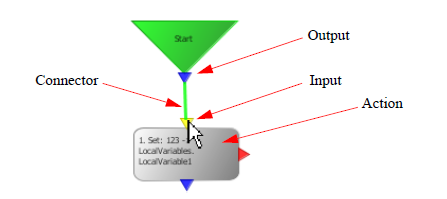
- When the input point turns yellow, release the
mouse button. The connection is made.
Ending an action
Every trigger must terminate with at least one End Execution action.
The Canvas Editor provides two end action execution path
buttons from the toolbar.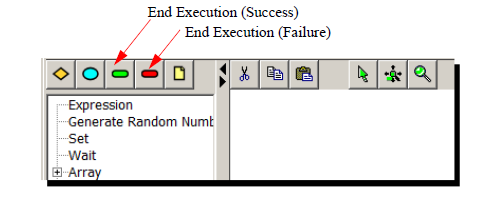
Likewise, you can add an End Execution
(Success) and End Execution
(Failure) action from the Canvas Editor left hand
pane under the Routing category as
follows: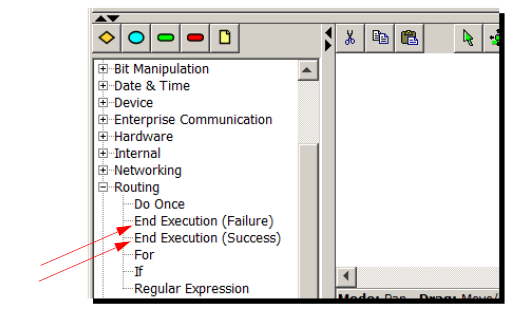
A trigger can have more than one End
Execution, but it must have at least one. The
following shows an action diagram configured with
End Execution (Success) and End
Execution (Failure) actions.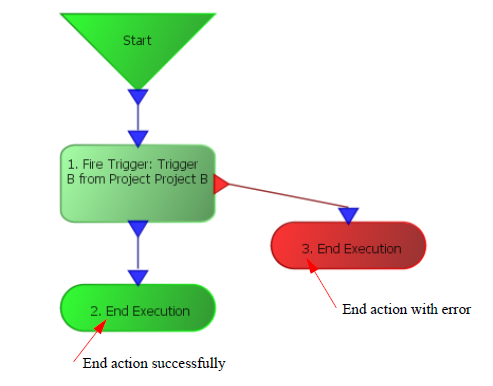
End Execution (Success)
End Execution (Success) signals that the trigger successfully ended. This route will immediately complete the trigger as a success. There must be at least one end action successfully route for the trigger to end successfully.
To add an End Execution (Success)
action, follow these steps:
- From the Canvas Editor left hand pane under the
Routing category, locate and then
expand Routing, and then select
End Execution (Success).
You can also select
 from the toolbar.
from the toolbar. - Drag to where you want the action to appear. The
mouse pointer changes to a crossbar.
- Select again.
The End Execution (Success) action appears on the right hand pane.
- Double-click the action.
The End Execution (Success) window appears.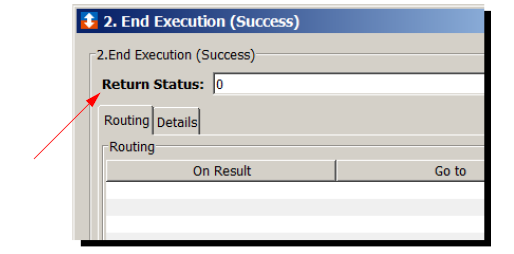
- You can accept the default value of zero for the
Return Status parameter, or type a
custom return code value to identify the successful
completion of the action. A custom code enables you to
identify where the success occurred in the trigger if
there are numerous end success exits. When the trigger
has reporting turned on, you can view the report (from
the Reports tab) and then check the
return status of the End Execution
(Success) action. You can also manually run a
report for the trigger.
- Close the window.
Once the trigger is saved and started, you can track its success using the project tab associated with the trigger.
End Execution (Failure)
End Execution (Failure) signals that the trigger ended with errors.
To add an End Execution (Failure)
action, follow these steps:
- From the Canvas Editor left hand pane under the
Routing category, locate and then
expand Routing, and then select
End Execution (Failure).
You can also select
 from the toolbar.
from the toolbar. - Drag to where you want the action to appear. The
mouse pointer changes to a crossbar.
- Select again.
The End Execution (Failure) action appears on the right hand pane.
- Double-click the action.
The End Execution (Failure) window appears.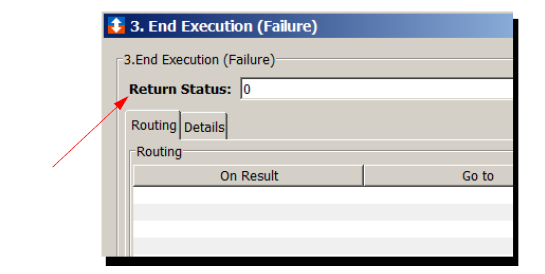
- You can accept the default value of zero for the
Return Status parameter, or type a
specific error code to identify the error. A custom
error code enables you to identify where the error
occurred in the trigger if there are numerous end error
exits.
When the trigger has reporting turned on, you can view the report (from the Reports tab) and then check the return status of the End Execution (Failure) action. You can also manually run a report should a failure become apparent on the Failures column for the trigger. - Close the window.